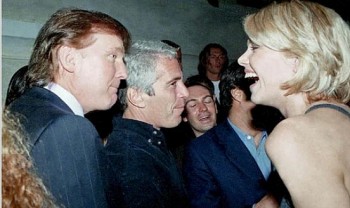How Many Teeth Do You Have: Children and Adults
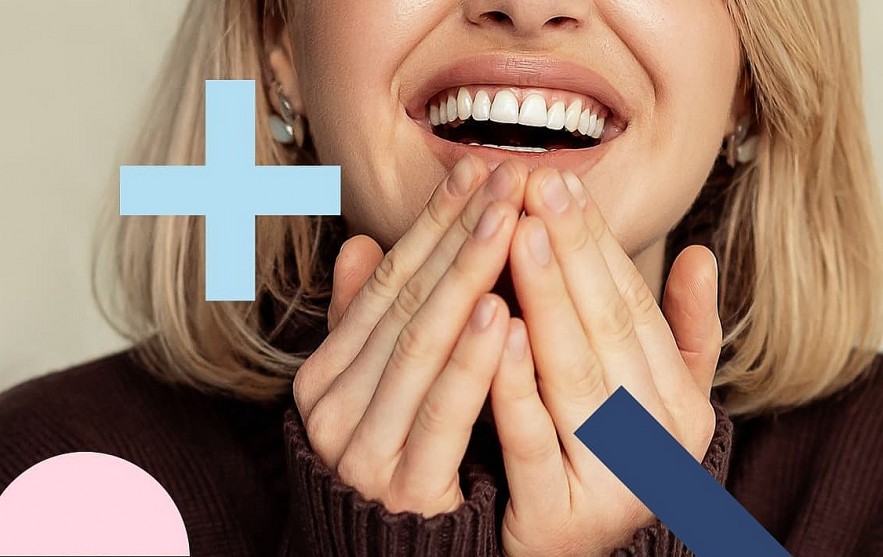 |
| How many teeth do we have? |
| Table of Contents |
Exactly how many teeth do we have? What is the difference between baby teeth and adult teeth?
An adult typically has a total 28 to 32 teeth. On the other hand, children from 3 to 7 years old have 20 teeth.
What are Teeth?
The primary purpose of teeth, which are hard appendages in the oral cavity, is to pulverize and tear food.
It is firmly embedded in cavities in the jaw frame and has a structure resembling hard bone tissue. The body, which is visible inside the mouth, and the foot, which attaches to the gums and jawbone, are the two main components of each tooth.
Especially the incisors, which have just one root while the other teeth have two or three, the roots are frequently longer than the crowns.
Dentin, a calcified tissue that resembles bone and has living cells inside, is the most crucial structural component of teeth.
Enamel, an extremely hard tissue that lacks feeling when touched, covers the dentin's outermost layer. To help keep the tooth fixed in the cavity on the jaw frame, the root portion of the tooth is covered with a layer of tooth bone that shares characteristics with the dentin layer.
There will be a hollow cavity in the center of the tooth that is filled with the delicate connective tissue known as pulp. From the crown to the tip of each root, this portion of the pulp is present. At each root, an opening will be present at the deepest point in the jawbone. Small blood vessels and nerves can enter the spinal cavity through this opening.
How Many Types of Teeth Do We Have and Functions?
The sockets of the jaw bones contain the teeth, which are tiny, hard organs. that jaw.
The part of the tooth that is anchored in the jawbone is called the root, while the visible portion that protrudes above the gingiva is called the crown.
The process of digestion depends heavily on the function of the teeth. They handle the chopping, tearing, and grinding of food. They form a small ball with the aid of saliva and the tongue's action, which will be swallowed after entering the stomach and beginning the digestive process.
Adult teeth typically number 32. What are the purposes of each type of human tooth and how many different types are there?
Human teeth are specifically divided into 4 groups, each of which serves a different purpose:
Eight Incisors
Your mouth's front teeth are called incisors. They're the kinds of teeth you'll first notice in a teething baby, and they're sometimes referred to as front teeth. Eight incisors are typically present, with four in the lower jaw and four in the upper jaw.
When speaking and smiling, it's easy to see that the teeth are developing in front of the jaw. The biting edge of the front teeth is extremely sharp and shovel-shaped.
The incisors' primary job is to bite and tear food into bite-sized pieces. Before your tongue and other teeth move them to the back of your mouth for proper chewing and swallowing, they chop food into smaller pieces.
Four Canines
The next set of teeth to erupt after incisors are the canines. Two canines are located on the top jaw and two are located on the bottom jaw of humans.
The canines are pointed and sharp. They assist with food cutting and tearing. The shape of canines also allows them to control the rows of your teeth so that they slide together without jarring when your jaw moves.
Eight Premolars
The teeth that come right after the canines and before the molars are the premolars. Four are located in the upper jaw and four are located in the lower jaw of an adult.
The primary job of the premolars is to tear and crush food.
Prior to the food reaching the molars for thorough grinding and chewing, the grinding process begins in the premolars. Given that they transfer food particles from your canines to the molars for thorough chewing, some people refer to premolars as transitional teeth.
Twelve Molars (the number inclusive of 4 wisdom teeth)
There are typically 12 molars in the back of your mouth, including four wisdom teeth. Large molars make it possible for them to chew and grind food. There are three molars in each of your four jaws (left lower, left upper, right lower, and right upper).
The first, second, and third molars are designated by markings. Wisdom teeth are the third molars on either side of your jaw. They take the longest to erupt (18–25 years) and are located at the back of your mouth.
Large molars have intricate shapes, substantial chewing surfaces, and sizable chewing surfaces.
The primary purpose of the molars is to thoroughly chew and grind food.
They typically cause pain and must frequently be removed, especially if they partially or sideways erupt. Similar to how some people never get wisdom teeth.
Read More: Top 10 Weirdest Toothpastes In The World
How Many Teeth Do Kids Have?
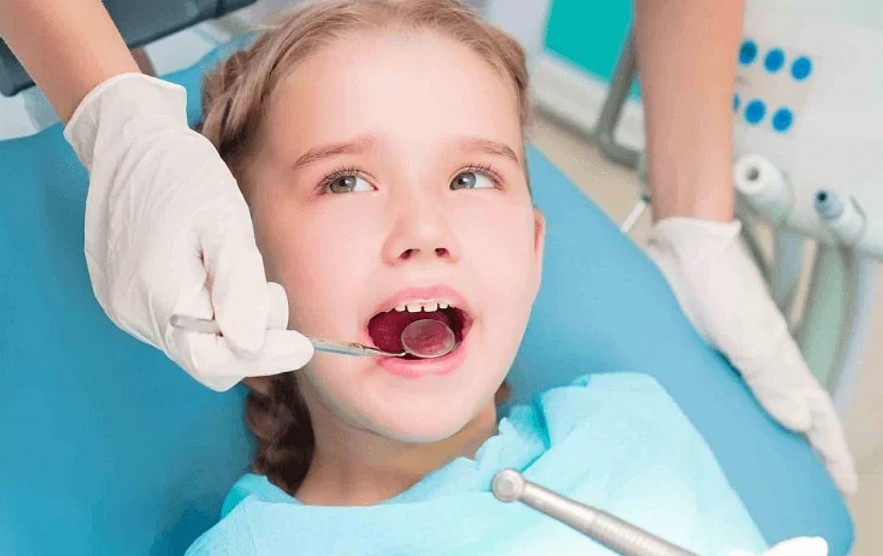 |
| How Many Teeth Do Children Have |
Infant Teeth Under Their Gums at Birth
A newborn baby's teeth are hidden from view. Although we mistakenly believe that children's teeth are missing teeth, in reality, the tooth buds are still present and are just "buds" that are hidden inside the gums.
Rarely, genetic birth defects, hormonal imbalances, and specific bone and skin diseases can cause abnormal teeth or even tooth loss.
Timeline: Children Teething
The majority of kids begin teething around six months of age, although the exact age can vary greatly. The following order is typically followed when baby teeth erupt:
At six months of age, the baby's first teeth will break through the arch. The teeth will then gradually complete their growth until there are 20 teeth for each jaw.
As the bones in your child's face begin to develop around the age of four, you might notice spaces forming between the primary teeth. This is completely normal and aids in making room for the larger permanent teeth to erupt.
Children have 20 permanent teeth by the time they are 5 years old, with the process of replacing baby teeth starting then.
Upper Teeth of Kids
• Central incisor: 8 to 12 months
• Lateral incisors: 9 to 13 months
• First molars: 13 to 19 months
• Canines: 16 to 22 months
• Second molars: 25 to 33 months
Lower Teeth of Kids
• Central incisor: 6 to 10 months
• Lateral incisors: 10 to 16 months
• First molars: 14 to 18 months
• Canines: 17 to 23 months
• Second molars: 23 to 31 months
| The back baby teeth are usually not lost until age 10-12 years. This means it is even more important to take care of the back baby teeth as they are not changed until the kids are in their early teens. |
How Many Teeth Do Adults Have?
 |
| How Many Teeth Do Adults Have |
Do you realize how many teeth an adult has? More teeth are present in older adults than in younger people.
Our mouth appears to have an excessive number of teeth. Yes, but not to worry—our jaws will expand to make room for these teeth, giving us a set of teeth that smile beautifully.
Permanent teeth start growing in your jaws at birth and continue to do so until you are 21 years old. 32 permanent teeth (16 in the upper jaw and 16 in the lower jaw) are most likely in your future.
A typical adult human has 32 teeth if their wisdom teeth were never removed and 28 teeth if they were.
After their wisdom teeth are removed, the majority of people have 28 teeth (14 in the upper jaw and 14 in the lower jaw). The wisdom teeth of other people also never erupt.
As a result, if you have fewer teeth (28 as opposed to 32), you won't have to worry about it.
Some teeth are harmed by conditions like erosion brought on by reflux or decay. A rare genetic disorder called tooth agenesis causes some teeth to simply fall out. Supernumerary teeth are extra teeth that some people have.
By the time they reach adolescence, the majority of people have their complete set of adult teeth. Wisdom teeth are always included in the total number of permanent teeth.
Adults have a total of 32 teeth. These are distributed in 8 incisors, 4 canines, 8 premolars and 12 molars. |
What is the Structure of Teeth and Teeth Made Of?
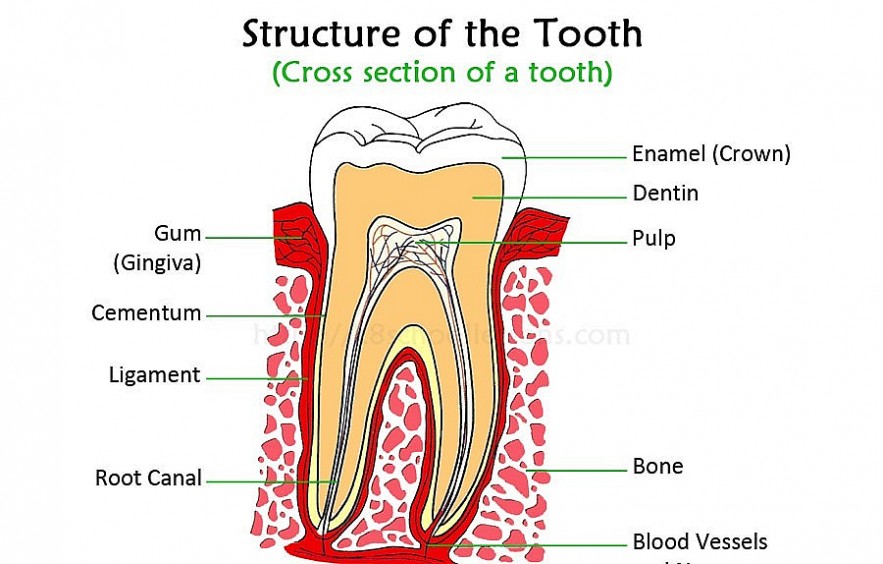 |
| Structure of the Tooth |
The crown and root of each tooth are made up of different tissues, and they are each comprised of a different tissue. The crown is the visible portion of the tooth; the root, which is hidden by the gum and maxillary bone, is not. However, the crown is crucial to chewing.
Enamel, dentin, and pulp are the three main layers of a tooth, and they are as follows:
Dental Enamel
The hardest tissue in the body and the one with the highest concentration of inorganic salts (96%) is enamel. Additional ingredients include carbonate salts, MgCO3 (which makes up 2% of the inorganic content), a negligible amount of chloride, fluoride, sodium, and potassium sulfate. 1% of the ingredients are organic, mostly the amino acids histidine and lysine arginine (found in karetin).
In its normal state, the enamel layer will be translucent, thin, and well absorbed by lime. It is also hard, brittle, and resistant to X-rays. The dentin can be seen if we look through the enamel, giving the teeth their slightly yellowish white color from the ivory layer. Young enamel layers on emerging teeth can contain up to 30% water and organic matter. Because the crystals are arranged more closely together as the glaze ages, the amount of inorganic material also rises. On the other hand, it also gradually absorbs significant trace elements like fluorine, resulting in the transformation of apatite into fluoroapatite.
| To maintain the health of teeth, enamel plays a very important role. That is why we must take care of it and maintain its integrity throughout life. The shade of the teeth depends on the stains that form on the enamel. |
Dentin
The dentin serves as the tooth's primary mass in the crown, covering and safeguarding the pulp. Normal circumstances prevent it from being exposed because bone and enamel completely surround it. However, this organization is also less rigid and elastic than enamel while not being as brittle or delicate.
The layer of natural ivory is a light yellow color, extremely elastic, porous, and permeable. Up to 70% of the composition is inorganic, primarily composed of calcium phosphate and apatite (32H2O) phosphate. contains 30% water, 30% organic ingredients (primarily collagen colloid), calcium carbonate, fluoride, and magnesium.
Read More: Best Tips To Find The Best Dental Implant Specialist in the US Right Now
Dental Pulp
The pulp is a mass of connectable tissue that is found in the pulp cavity, which is the space between the teeth. The chamber pulp and root pulp all have shapes that are similar to the outer shape of the tooth. The volume of the pulp cavity in permanent teeth is influenced by the tooth's size, shape, and the number of canals. There will typically be a root canal in each root.
Organizations of the dental pulp include:
• Cell composition: Consists of odontoblasts, fibroblasts, undifferentiated cells and guard cells, which perform different functions.
• Composition of fibers and basic substances: Consists of fiber mesh, filaments and collagen fiber bundles.
• Pulp blood vessels: The main blood vessels enter the pulp through the apical foramen, in addition, they can also enter and exit through the accessory canals, especially in the bifurcation and tripartite areas of multi-rooted teeth.
• Veins: The part that goes to the root of the tooth to go out, their diameter will be smaller and the number will be less. As a result, the circulation in the marrow slows down, which is beneficial for the normal metabolism in the pulp.
Instructions on How to Take care of and Clean your Teeth Regularly and Properly
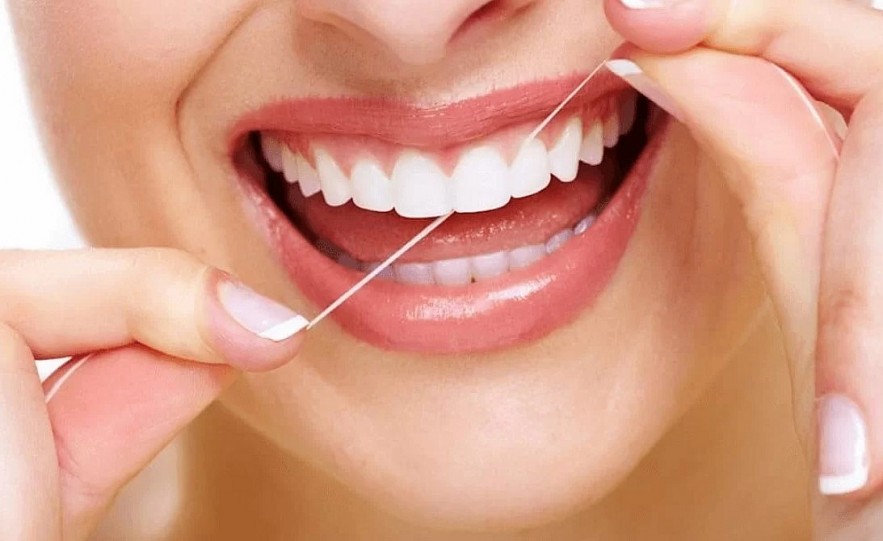 |
| How to Take care of and Clean your Teeth |
After understanding the problem of how many teeth people have, you should pay attention to taking care of your teeth in a scientific way. Because proper oral care will help keep teeth healthy, limit pests, infections.
Read More: 30 Amazing Ways to Use Toothpaste
Clean and brush teeth properly
Brushing properly will keep your mouth healthy, clean, and guard against tooth decay. After each meal, you should beat for at least two minutes. This should be done daily. Keep in mind that you ought to use a gentle toothbrush and appropriate toothpaste.
You should also use dental floss to remove food particles that adhere to your teeth after eating. It's very simple to harm teeth and gums if you don't use bamboo toothpicks as often as you should. should use mouthwash and clean the mesh surface simultaneously to reduce the amount of bacteria present.
Teeth with health and beauty
How many teeth are there in humans? How should you look after your teeth?
You should schedule regular checkups every three to six months to ensure your oral health. In order to avoid tooth decay and gingivitis, you should also remove tartar and have a general examination of your teeth performed as prescribed by your dentist.
Diet has a significant impact on one's oral health. You should include fresh fruits and vegetables in your meals and stay away from foods that are overly hot, cold, or spicy.
Alcohol, stimulants, and alcohol should also be avoided because they weaken tooth enamel and stain teeth.
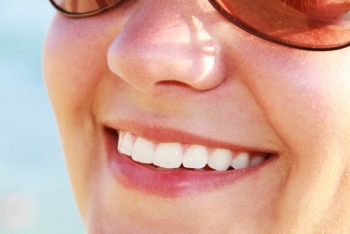 5 Tips to Whiten your Teeth Naturally at Home 5 Tips to Whiten your Teeth Naturally at Home How to whiten your teeth: Teeth inevitably begin to yellow with age, but a range of strategies can slow the process and even reverse it ... |
 Simple Ways to Clean your Teeth for a Healthy Mouth Simple Ways to Clean your Teeth for a Healthy Mouth Even if you are brushing your teeth three times every day, you might be neglecting your gums. Do you know some useful tips to take ... |
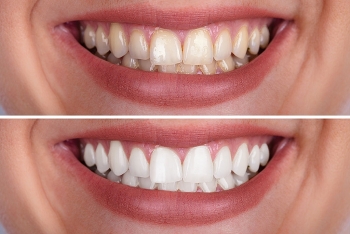 Teeth Stains: How to Remove and Prevent Teeth Stains: How to Remove and Prevent Most people struggle with teeth stains, caused by many factors including poor dental hygiene, smoking cigarettes, and drinking coffee, among others. |

















